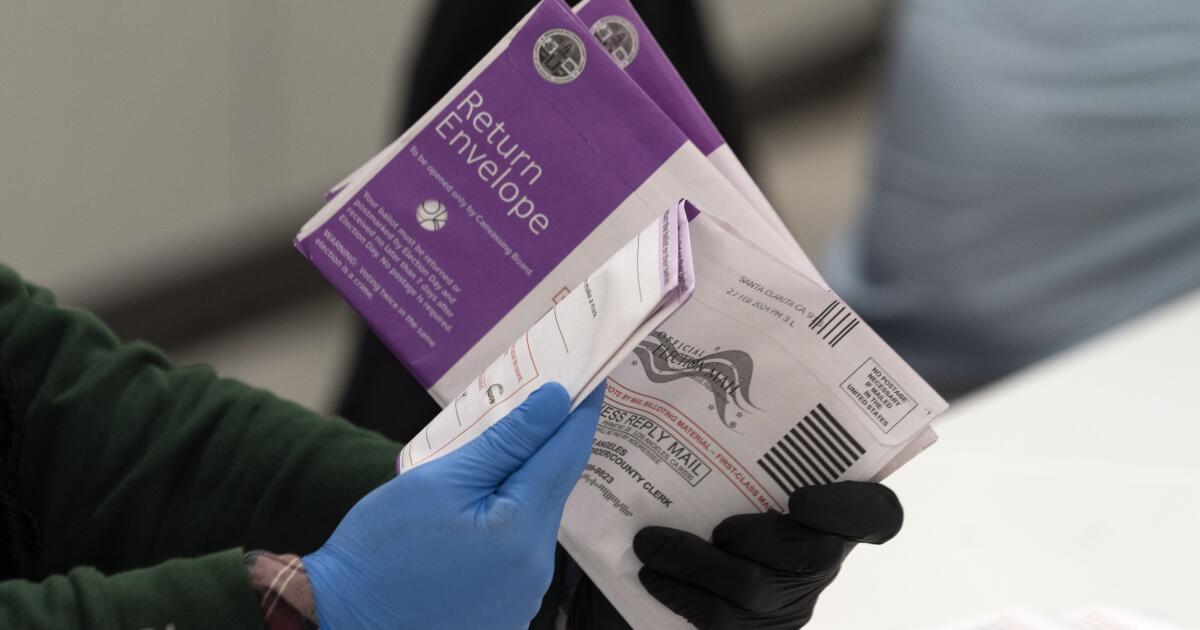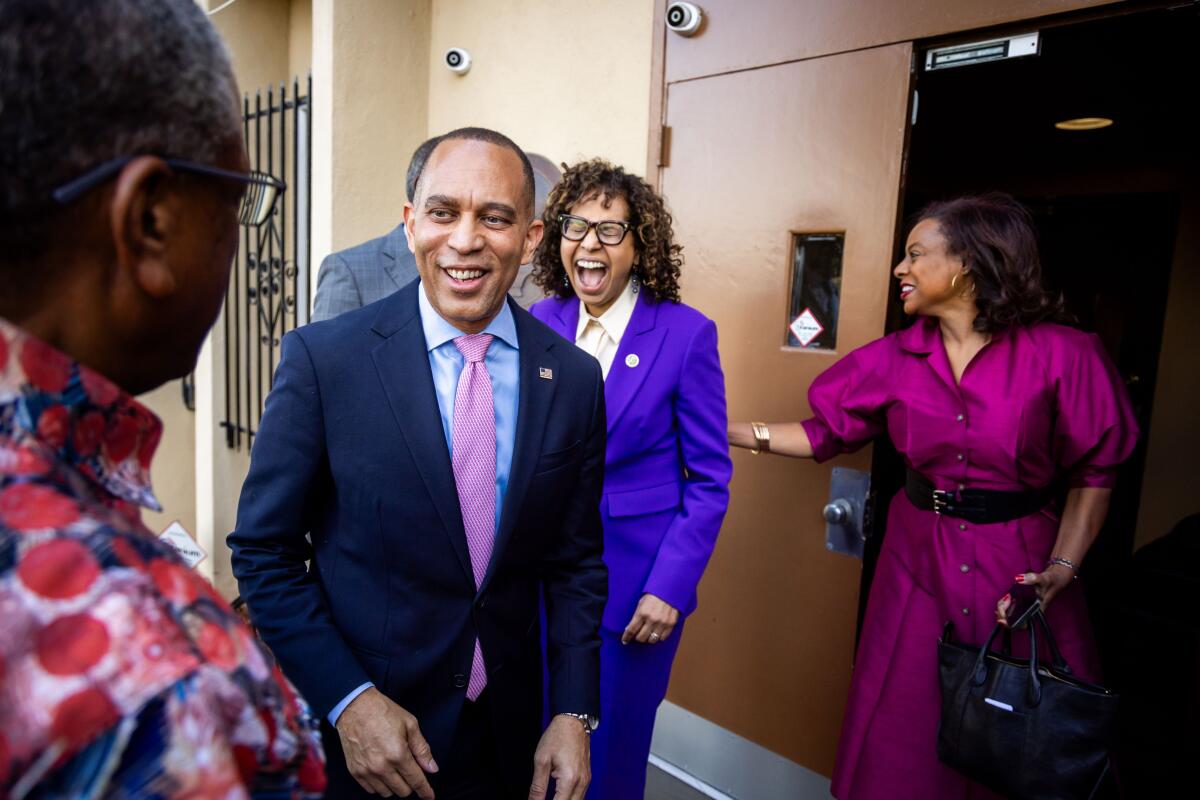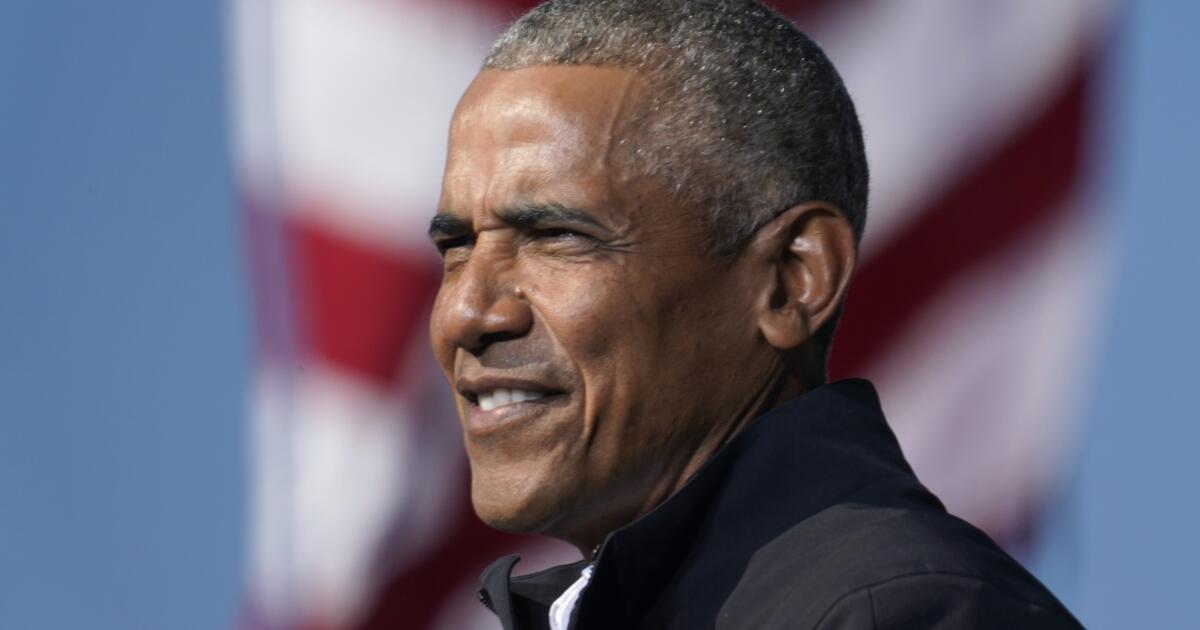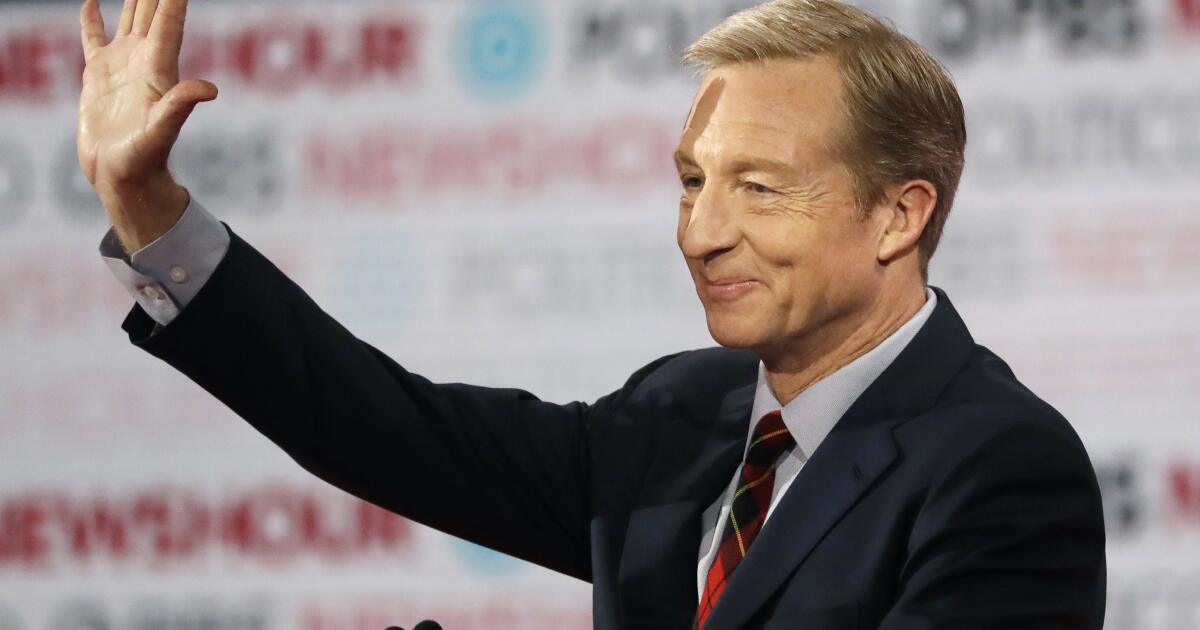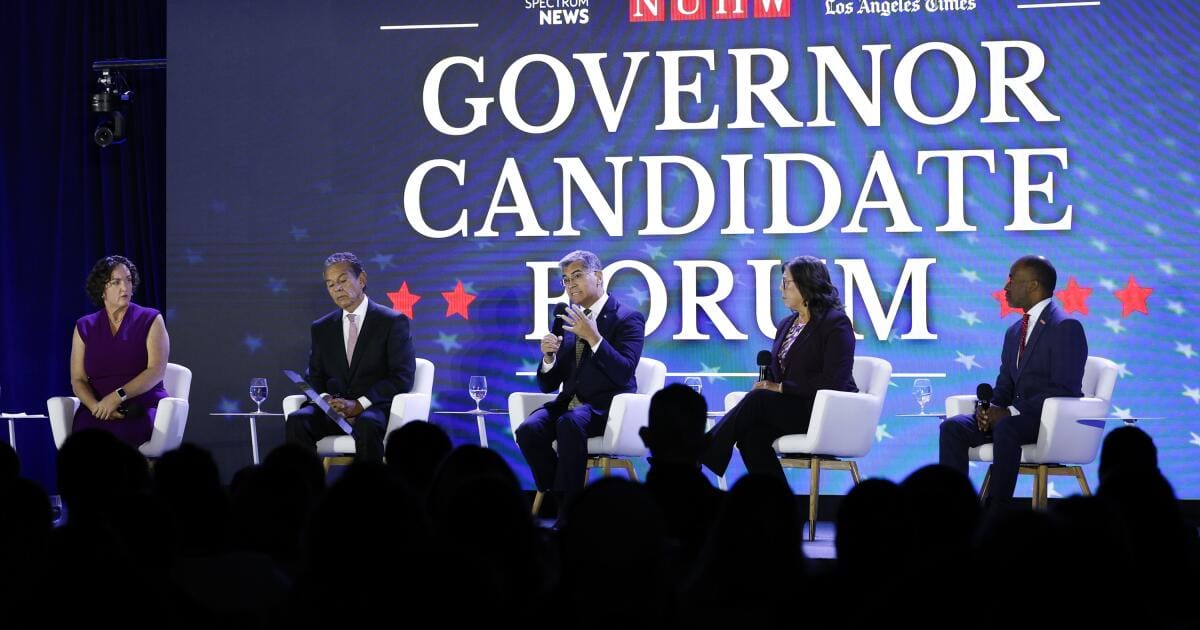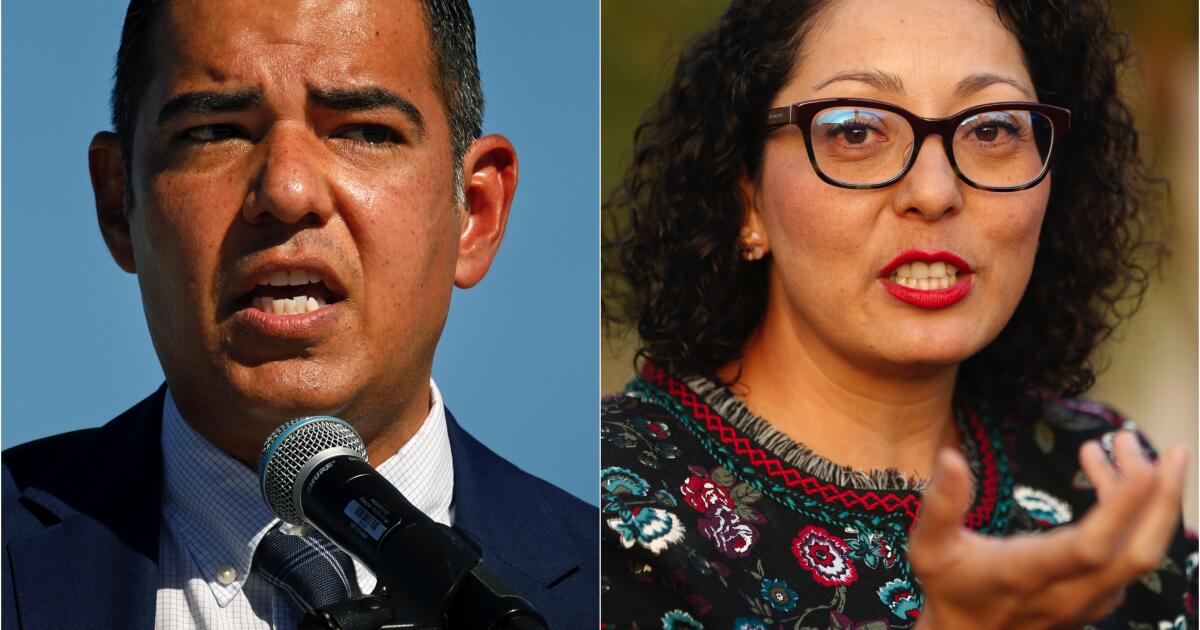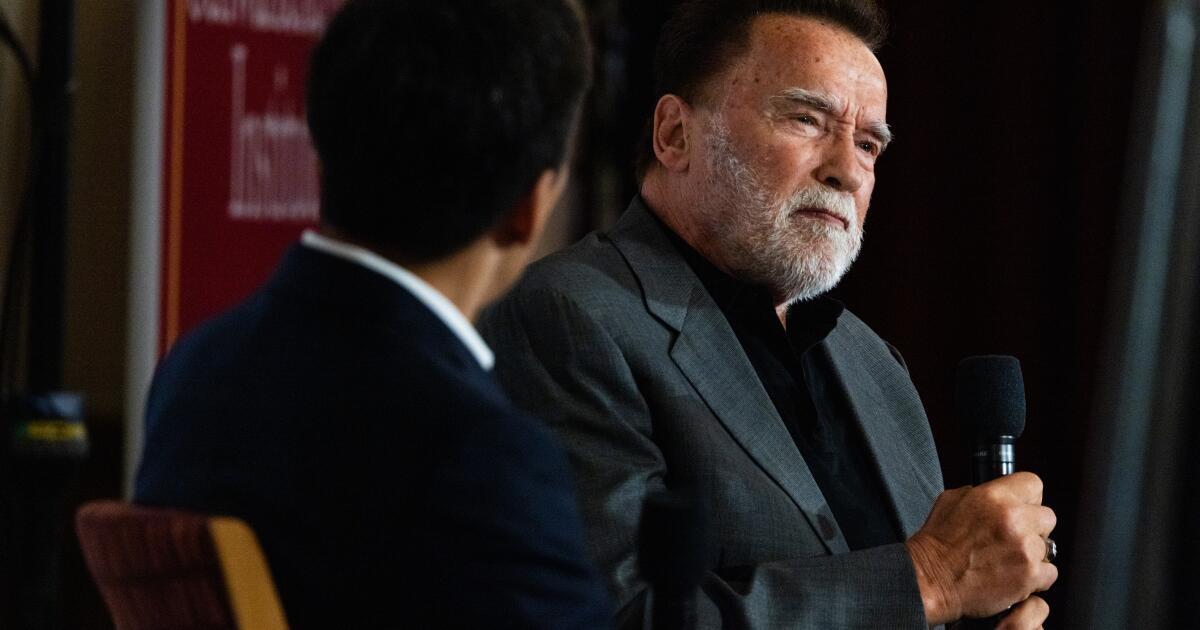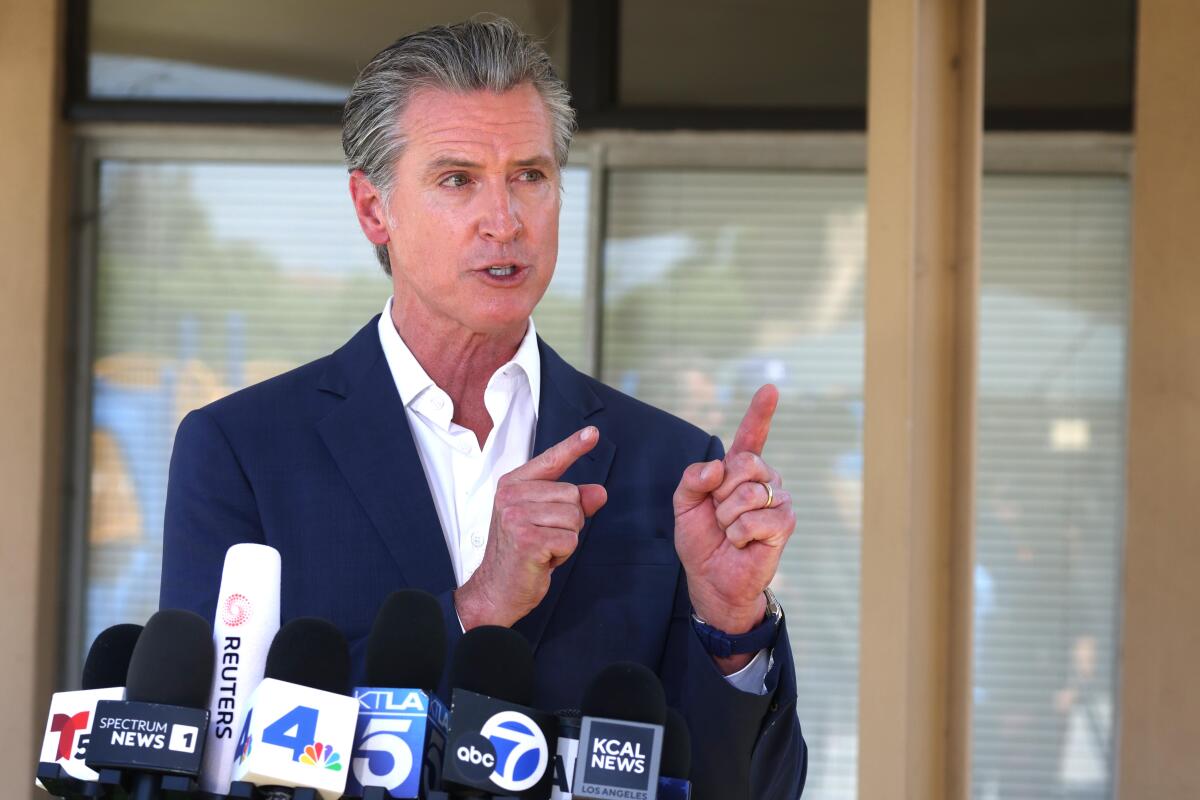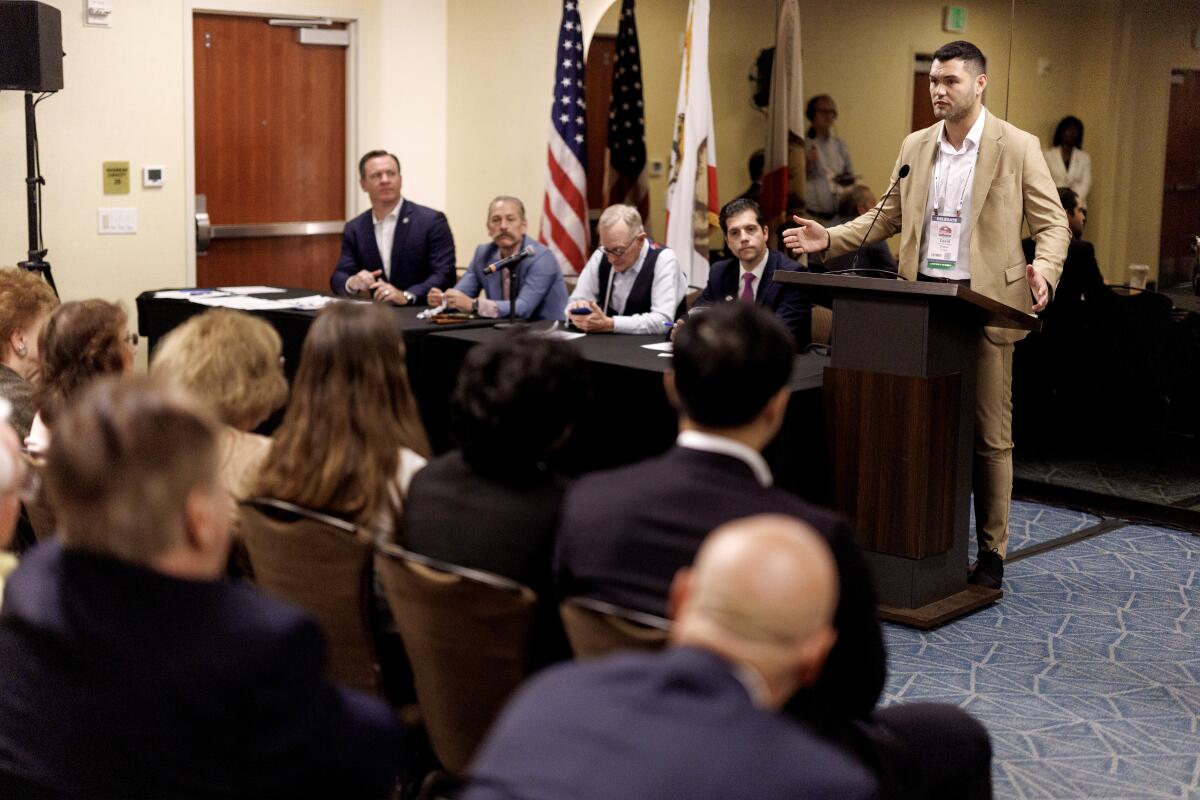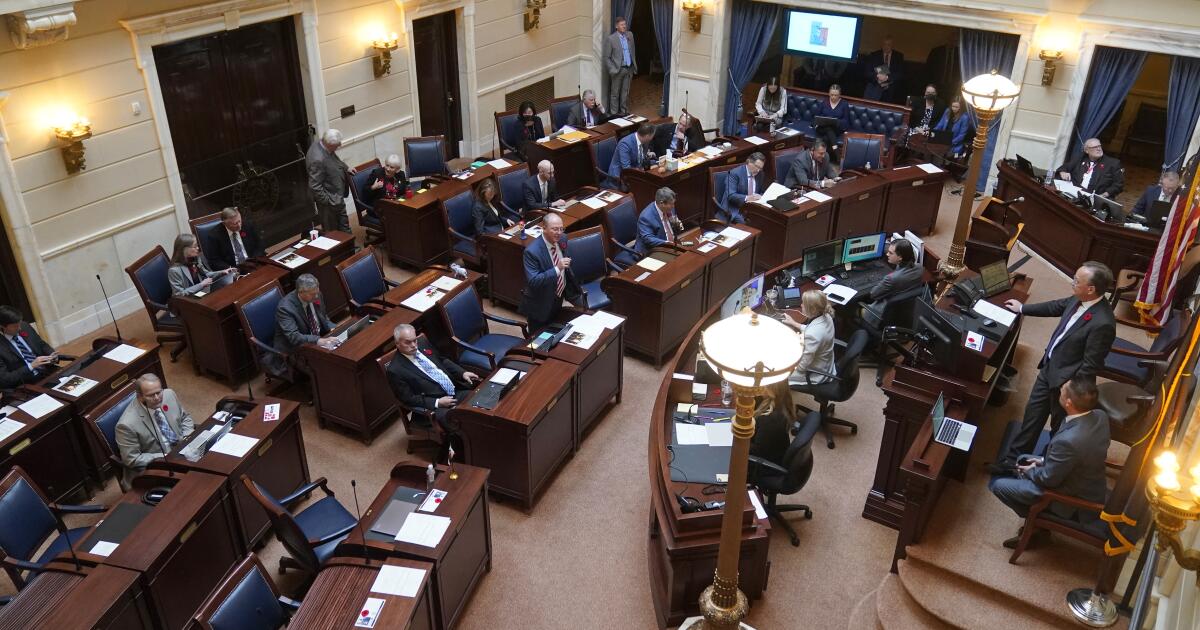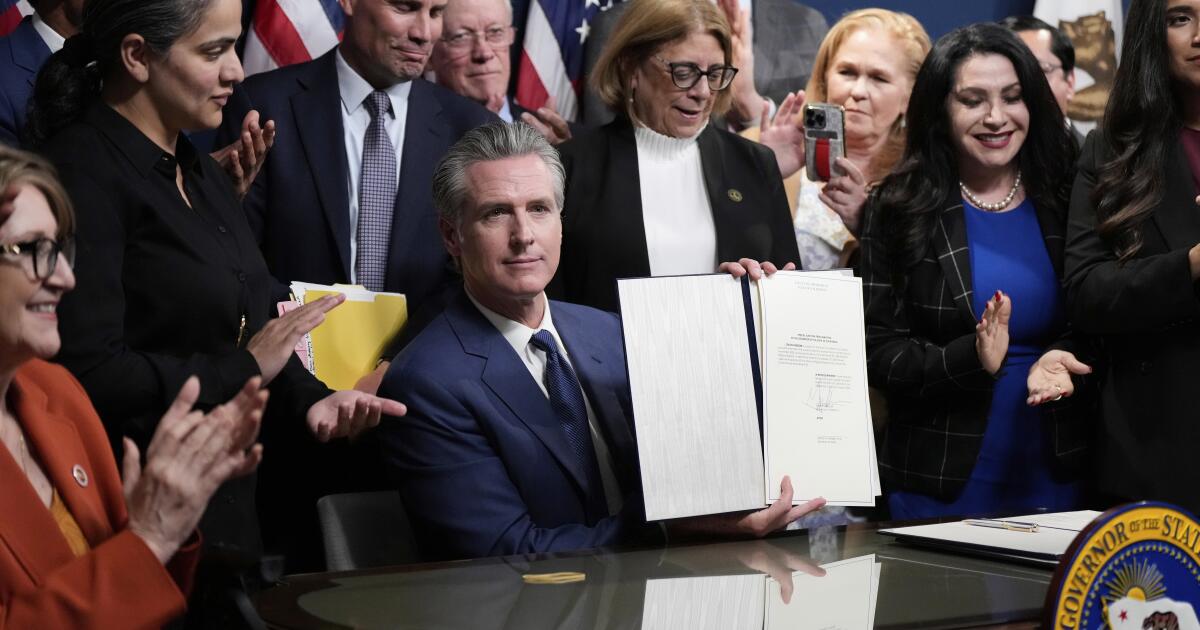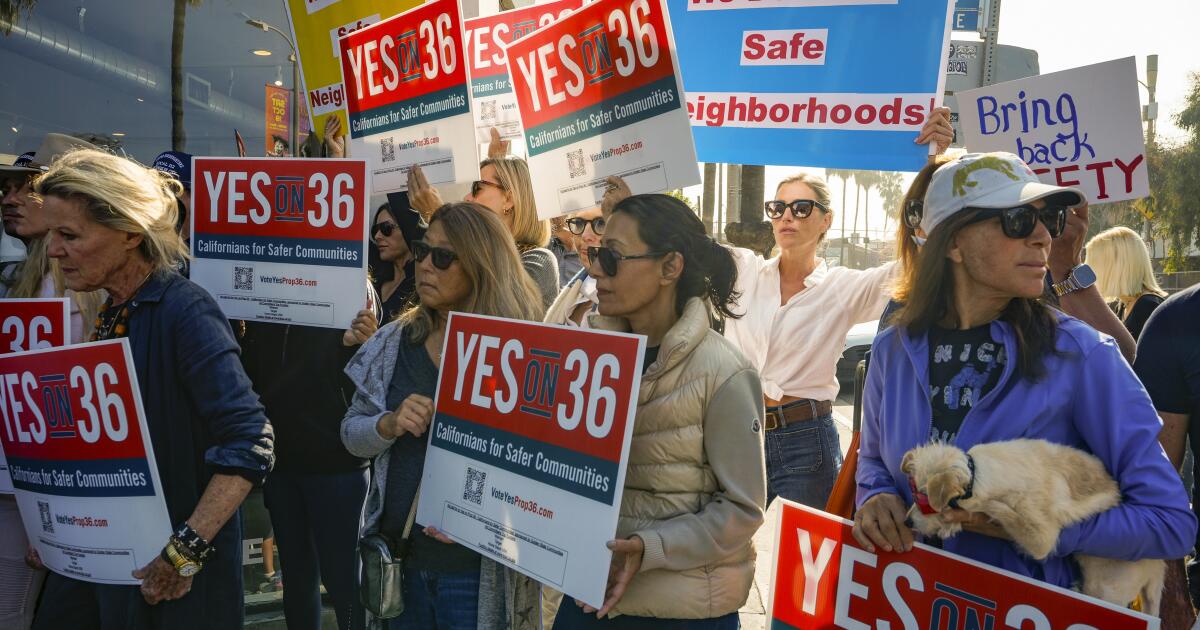Labor unions donate tens of millions to Newsom’s Proposition 50
With the fate of President’s Trump’s right-wing agenda at stake, the California ballot measure crafted to tilt Congress to Democratic control has turned into a fight among millionaires and billionaires, a former president, a past movie-star governor and the nation’s top partisans.
Californians have been inundated with political ads popping up on every screen — no cellphone, computer or living-room television is spared — trying to sway them about Proposition 50, which will reconfigure the districts of the largest state congressional delegation in the union.
Besides opposing pleas from former President Obama and former California Gov. Arnold Schwarzenegger, the state’s powerful, left-leaning labor unions are another factor that may influence the outcome of the Nov. 4 special election.
Unions representing California school teachers, carpenters, state workers and nurses have plowed more than $23 million into efforts to pass Proposition 50, according to an analysis of campaign finance disclosure reports about donations exceeding $100,000. That’s nearly one-third of the six-figure donations reported through Thursday.
Not only do these groups have major interests in the state capitol, including charter school reform, minimum wage hikes and preserving government healthcare programs, they also are deeply aligned with efforts by Gov. Gavin Newsom and his fellow Democrats to put their party in control of the U.S. House of Representatives in the 2026 election.
“There are real issues here that are at stake,” said veteran Democratic strategist Gale Kaufman, who has represented several unions that have contributed to Newsom’s committee supporting Proposition 50.
“There’s always a risk when making sizable donations, that you’re putting yourself out there,” Kaufman said. “But the truth is on Proposition 50, I think it’s much less calculated than normal contributions. It really is about the issue, not about currying favor with members of the Legislature, or the congressional delegation, or the governor. Even though, of course, it benefits them if we win.”
High stakes brings in big money from across the nation
Newsom’s pro-Proposition 50 committee has raised more than $116 million, according to campaign disclosure filings through Thursday afternoon, though that number is sure to increase once additional donations are disclosed in the latest fundraising reports that are due by midnight Thursday.
The multimillion-dollar donations provide the best evidence of what’s at stake, and how Proposition 50 could determine control of the House during the final two years of Trump’s presidency. If the Democrats take control of the House, not only could that derail major parts of Trumps agenda, it probably would lead to a slew of congressional hearings on Trump’s immigration crackdown, use of the military in American cities, accepting a $400-million luxury airliner from Qatari’s royal family, the cutting of research funding to universities and the president’s ties to sex offender Jeffrey Epstein, among many others.
The House Majority PAC — the Democrats’ congressional fundraising arm — has donated at least $15 million to the pro-Proposition 50 campaign, and House Minority Leader Hakeem Jeffries (D-N.Y.) was in Los Angeles to campaign for the ballot measure last weekend. Obama joined Newsom on a livestream promoting the proposition Wednesday, and Democratic National Committee Chairman Ken Martin hosted a bilingual phone bank in Los Angeles on Thursday.
“Make no mistake about what they’re trying to do and why it’s so important that we fight back,” Martin said. “We’re not going to be the only party with one hand tied behind our back. If they want a showdown, we’re going to give them a showdown and in just a little under two weeks it starts right here with Prop. 50 in California.”
Billionaire financier George Soros — a generous donor to liberal causes and a bogeyman to Republicans — has contributed $10 million. Others have chosen to fund separate entities campaigning in favor of Proposition 50, notably billionaire hedge-fund founder Tom Steyer, who chipped in $12 million.
On the opposition side, the largest donor is Charles Munger Jr., the son of the longtime investment partner of billionaire Warren Buffett, who has contributed $32.8 million to one of the two main committees opposing Proposition 50. The Congressional Leadership Fund — the GOP’s political arm in the House — has donated $5 million to the other main anti-Proposition 50 committee and $8 million to the California Republican Party.
Although Republicans may control the White House and Congress, the California GOP wields no real power in Sacramento, so it’s not surprising that Republican efforts opposing Proposition 50 have not received major donations from entities with business before the state.
The California Chamber of Commerce opted to remain neutral on Proposition 50. Chevron and the California Resources Corp., petroleum companies that have given to California Republicans in the past, also remain on the sidelines.
In contrast, Democrats control every statewide office and hold supermajorities in both houses of the California Legislature. The pro-Proposition 50 campaign has been showered with donations from groups aligned with Sacramento’s legislative leaders — with labor organizations chief among them.
Among the labor donors, the powerful carpenters unions have donated at least $4 million. Newsom hailed them in July when he signed legislation altering a landmark environmental law for urban apartment developments to boost the supply of housing. The California Conference of Carpenters union has become one of the most pro-housing voices in the state.
“This is the third of the last four years we’ve been together signing landmark housing reforms, and it simply would not have happened without the Carpenters,” Newsom said at the time.
Daniel M. Curtin, director of the California Conference of Carpenters, pointed to a letter he wrote to legislators in August urging them to put redistricting on the ballot because of the effect of Trump’s policies on the state’s workers.
“These are not normal times, and this isn’t politics as usual. Not only has the Trump administration denied disaster assistance to victims of California’s devastating forest fires, he’s damaging our CA economy with mass arrests of law-abiding workers without warrants,” wrote Curtin, whose union has 70,000 members in the state. “The Trump administration is now unilaterally withdrawing from legally binding union collective bargaining agreements with federal workforce unions. The President has made it clear that this is just the beginning.”
Proposition 50 was prompted by Trump urging Republican leaders in Texas to redraw their congressional districts to boost the number of GOP members in the House and keep the party in control after the 2026 election. Newsom sought to counter the move by altering California’s congressional boundaries in a rare mid-decade redistricting.
With 52 members in the House, the state has the largest congressional delegation in the nation. But unlike many states, California’s districts are drawn by an independent commission created by voters in 2010 in an effort to end partisan gerrymandering and incumbent protection.
The state’s districts would not have been redrawn until after the 2030 U.S. census, but the Legislature and Newsom agreed in August to put Proposition 50, which would give Democrats the potential to pick up five seats, on the November ballot.
Money from California unions pours in
Although much of the money supporting the efforts comes from wealth Democratic donors and partisan groups aimed at helping Democrats take control of Congress, a significant portion comes from labor unions.
The Service Employees International Union, which represents more than 700,000 healthcare workers, social workers, in-home caregivers and school employees and other state and local government workers, has contributed more than $5.5 million to the committee.
On Oct. 12, the union celebrated Newsom signing bills ensuring that workers, regardless of immigration status, are informed about their civil and labor rights under state and federal law as well as updating legal guidance to state and local agencies about protecting private information, such as court records and medical data, from being misused by federal authorities.
“Thank you to Governor Newsom for … standing up to federal overreach and indiscriminate, violent attacks on our communities,” David Huerta, president of SEIU California, said in a statement.
Huerta was arrested during the first day of U.S. Immigration and Customs Enforcement raids in Los Angeles in June and charged with a felony. But federal prosecutors are instead pursuing a misdemeanor case against him, according to a Friday court filing.
An SEIU representative did not respond to requests for comment.
The California Teachers Assn., another potent force in state politics, has contributed more than $3.3 million, along with millions more from other education unions such as the National Education Assn., the California Federation of Teachers and the American Federation of Teachers.
CTA had a mixed record in this year’s legislative session.
Newsom vetoed a bill to crack down on charter school fraud, Senate Bill 414. The CTA opposed the bill, arguing that it didn’t go far enough to target fraud in some of the schools, and had urged the governor to reject it.
Newsom signed CTA-backed bills that placed strict limits on ICE agents’ access to school grounds. But he also vetoed union-backed bill that would have required the state Board of Education to adopt health education instructional materials by July 1, 2028.
CTA President David Goldberg said their donations are driven not only by issues important to the union’s members, but also the students they serve who are dependent on federally funded assistance programs and impacted by policies such as immigration.
“It’s about our livelihood but it really is about fundamental issues … for people who serve students who are just incredibly under attack right now,” Goldberg said.
“The governor’s support for labor would be exactly the same with or without Proposition 50 on the ballot. But he would acknowledge this year is more urgent than ever for labor and working people,” said Newsom spokesperson Bob Salladay. “Trump is taking a wrecking ball to collective bargaining, to fair wages and safe working conditions. He would be backing them up under any circumstances, but especially now.”
Critics of Proposition 50 argue that these contributions are among the reasons voters should oppose the ballot measure.
“The independent redistricting commission exists to prevent conflicts of interest and money from influencing line drawing,” said Amy Thoma, a spokesperson for the Voters First Coalition, the committee backed by Munger Jr., who bankrolled the 2010 ballot measure to create the independent commission. “That’s why we want to preserve its independence.”
Other labor leaders argued that although they are not always in lockstep with Newsom, they need to support Proposition 50 because of the importance of Democrats winning the congressional majority next year.
Lorena Gonzalez, the head of the powerful California Labor Federation, said the timing of the member unions’ donations of millions of dollars to Newsom’s ballot measure committee for an election taking place shortly after the bill-signing period was “unfortunate” and “weird.”
“Because we have so many bills in front of him, we were gun-shy,” she said, noting that the federation has sparred with the governor over issues such as the effect of artificial intelligence in the workplace. “Never be too close to your elected officials. Because we see the good, the bad, the ugly.”
Times staff writers Andrea Flores and Brittny Mejia contributed to this report.



